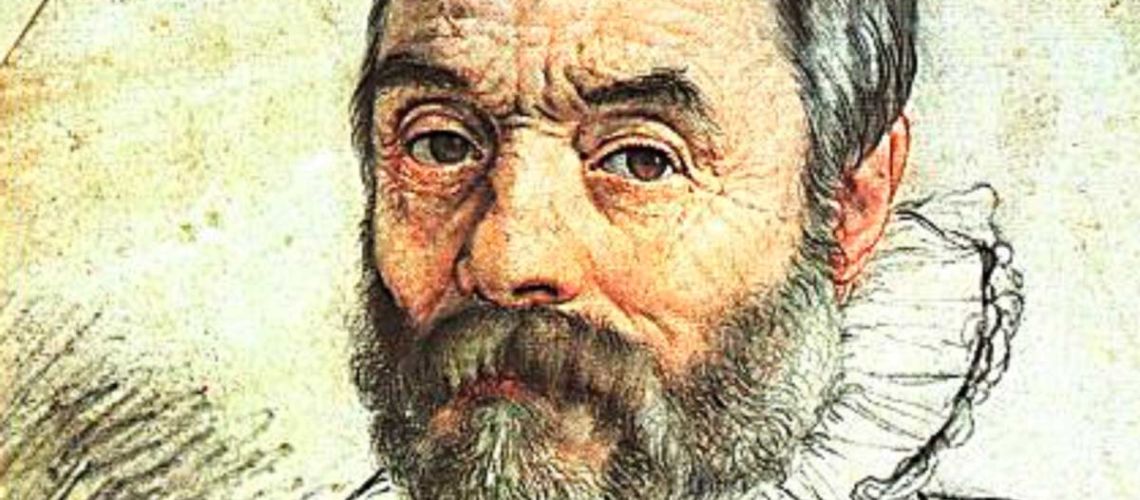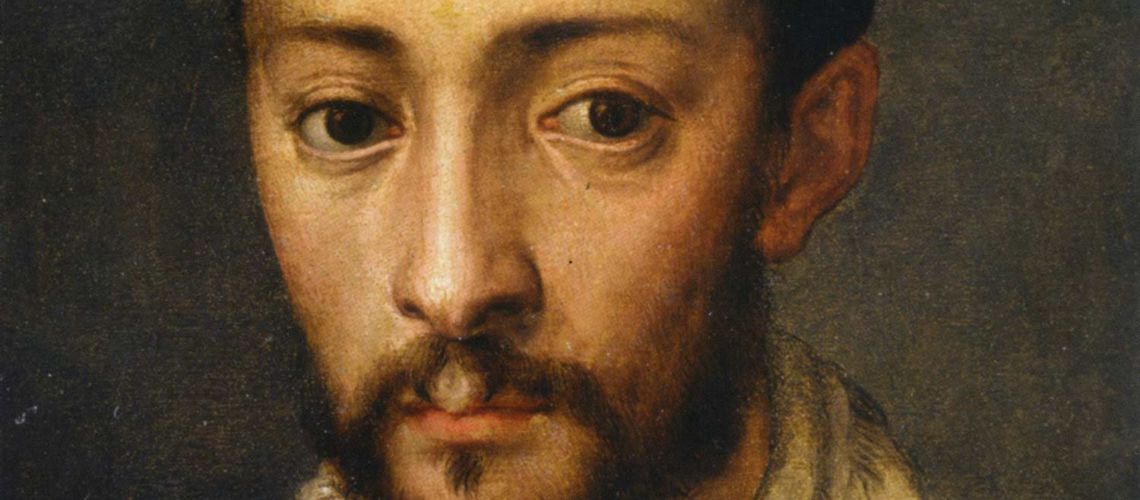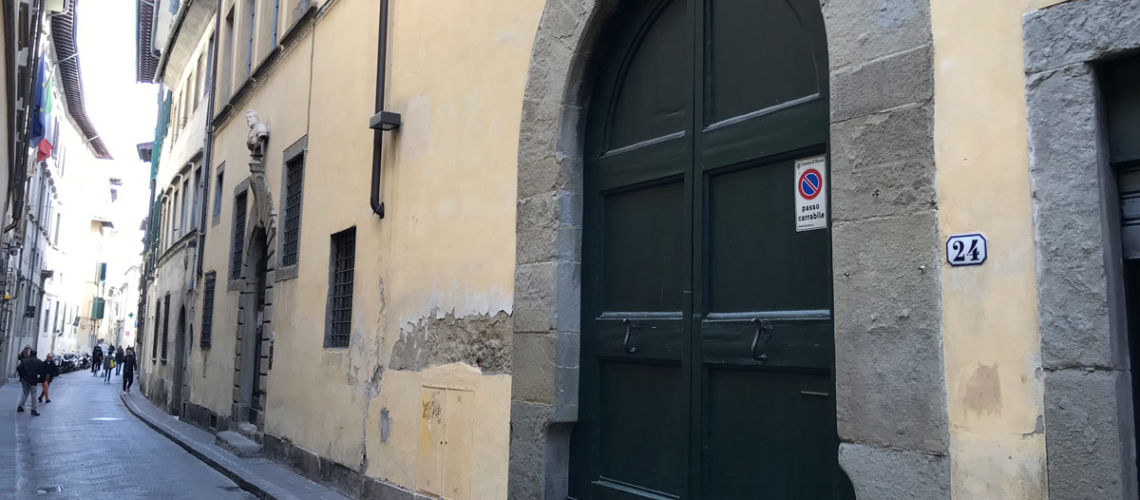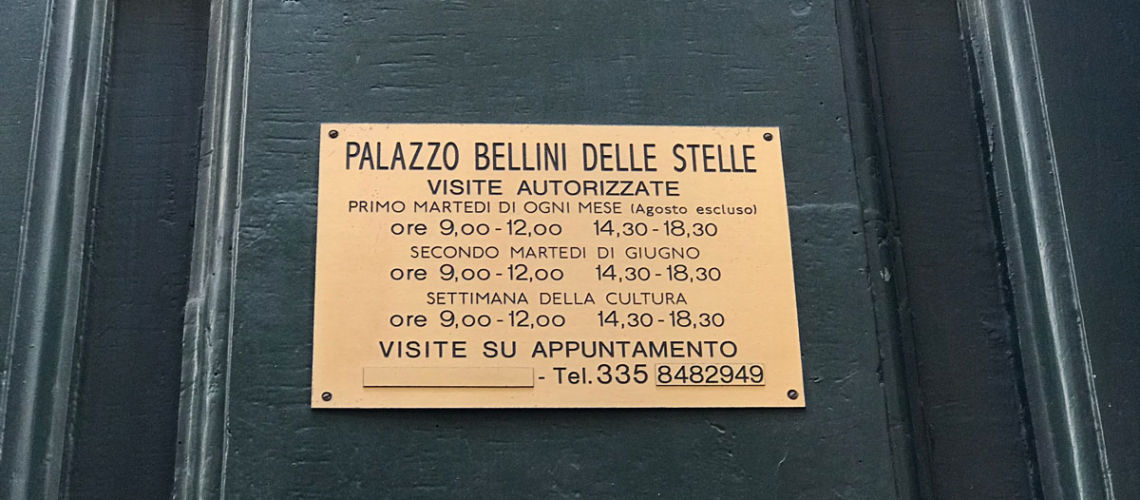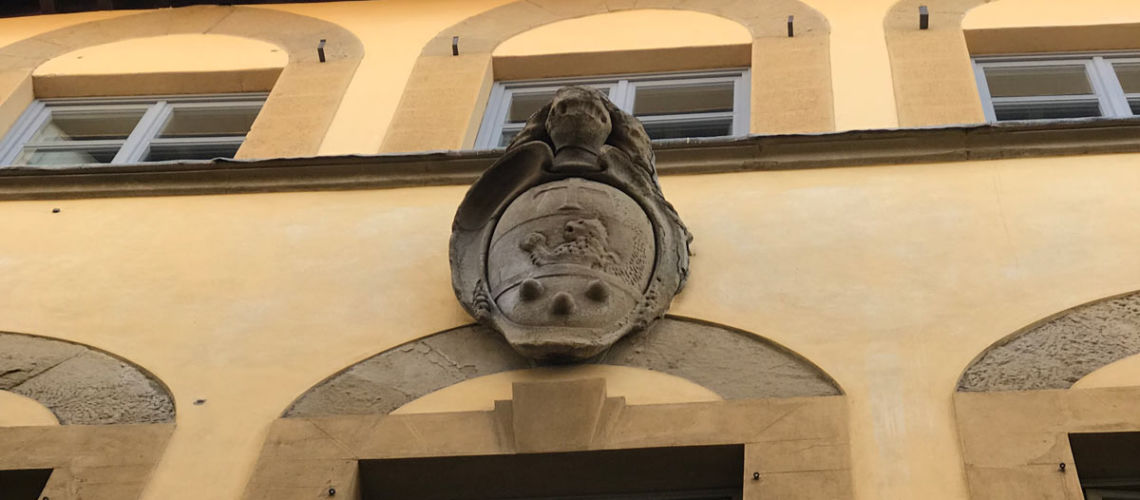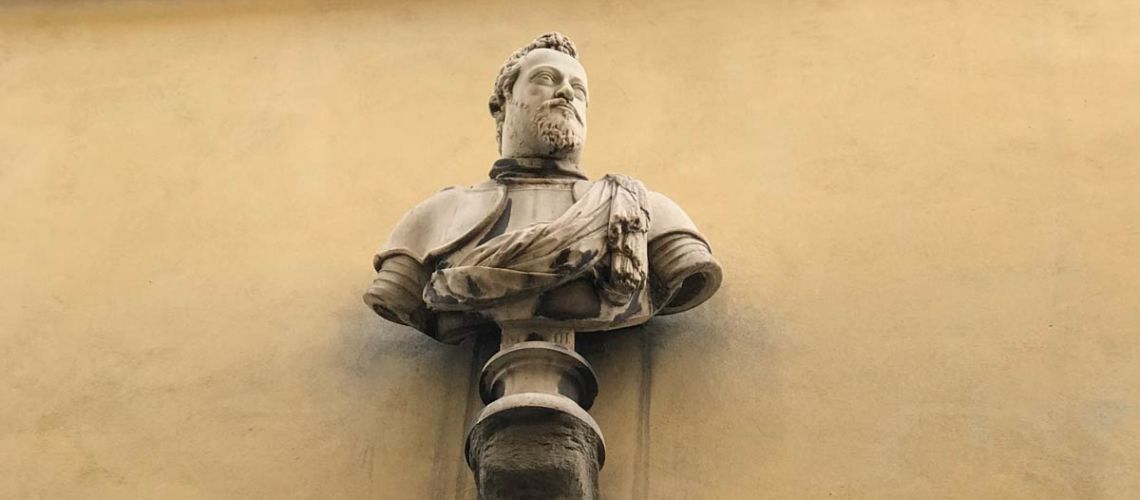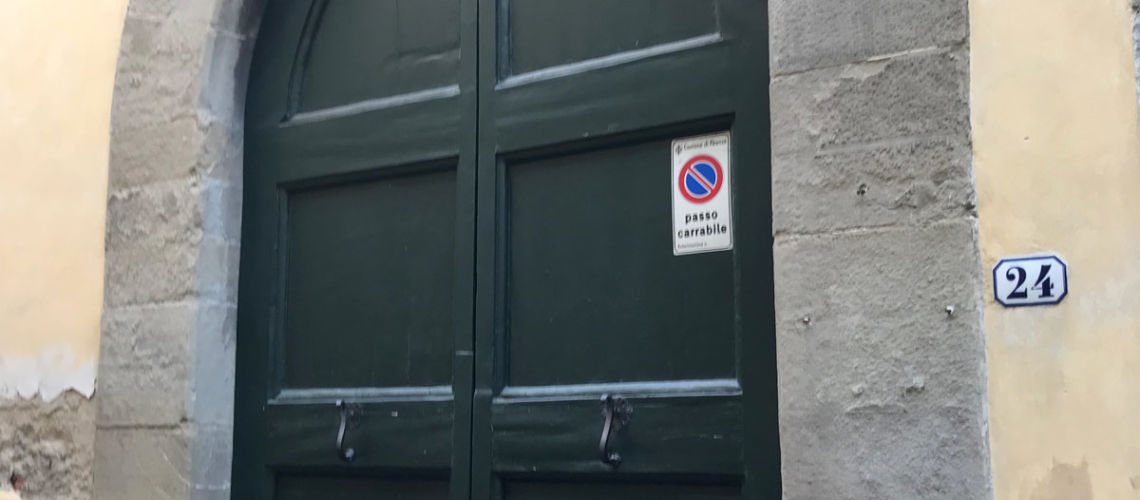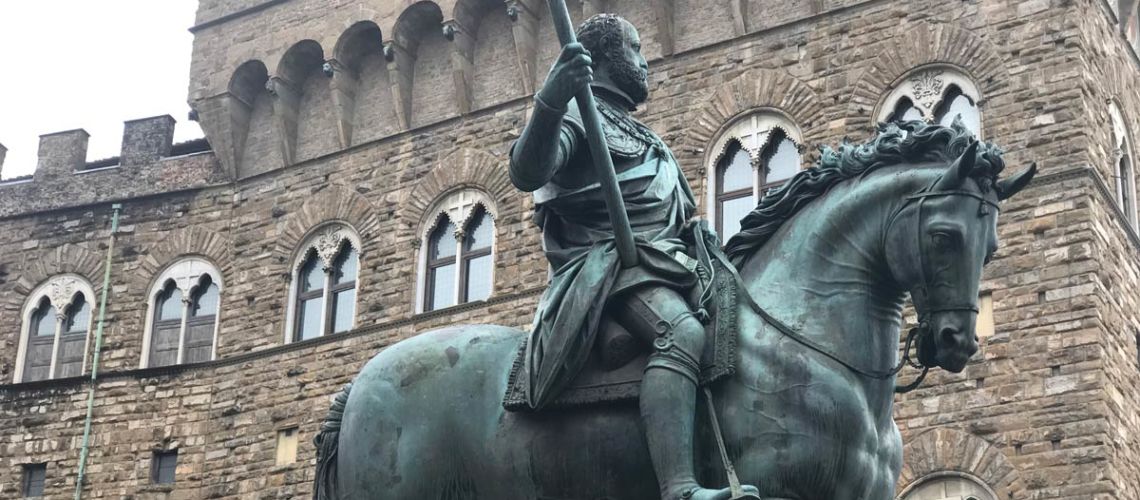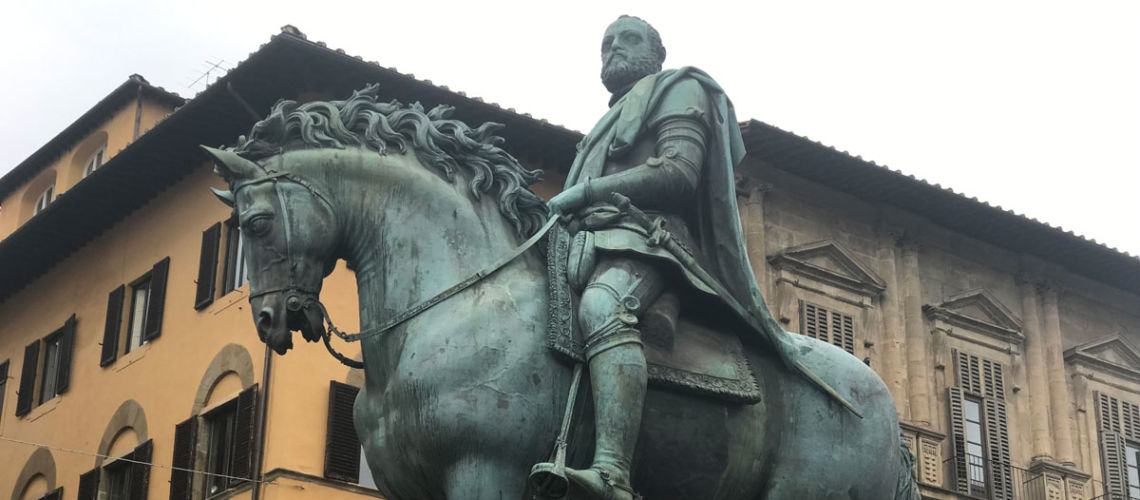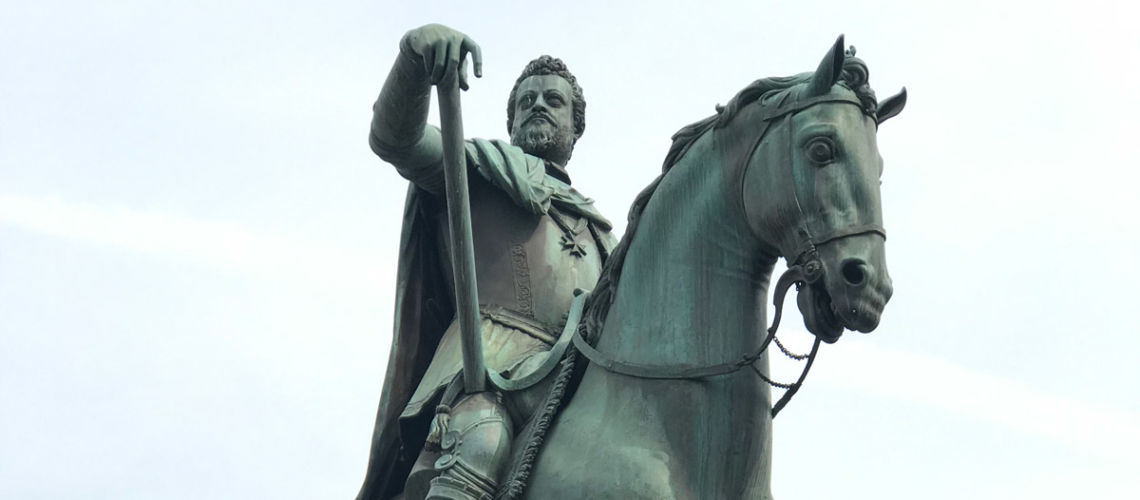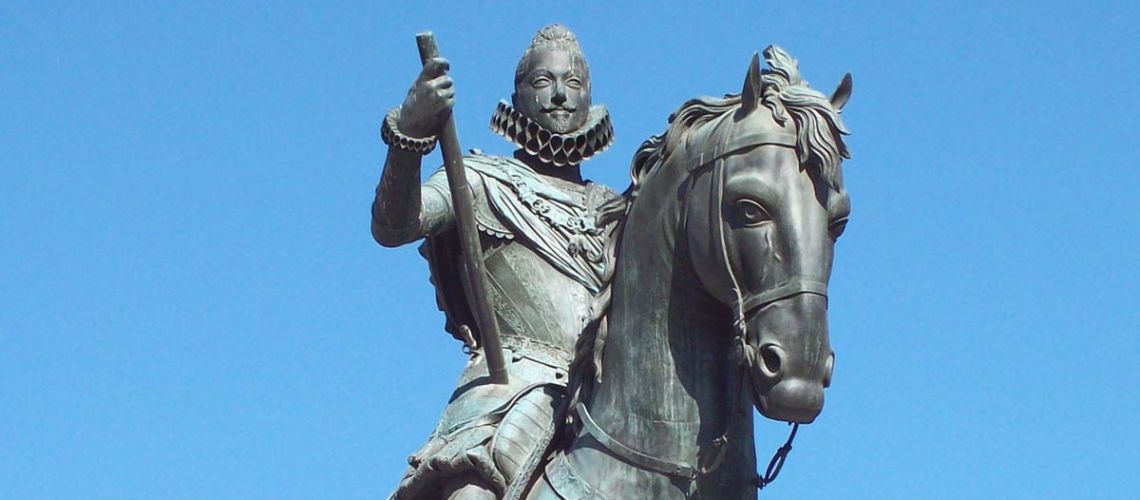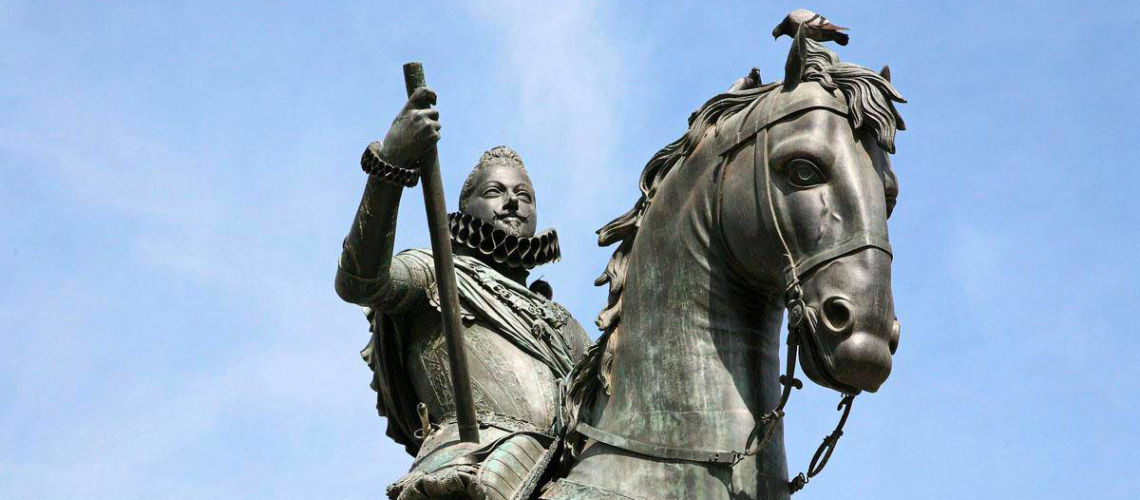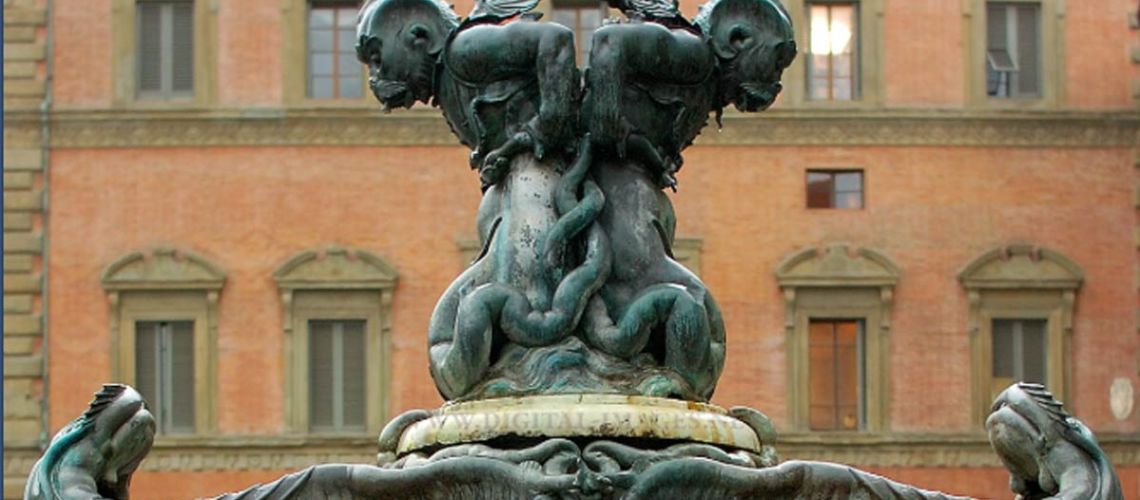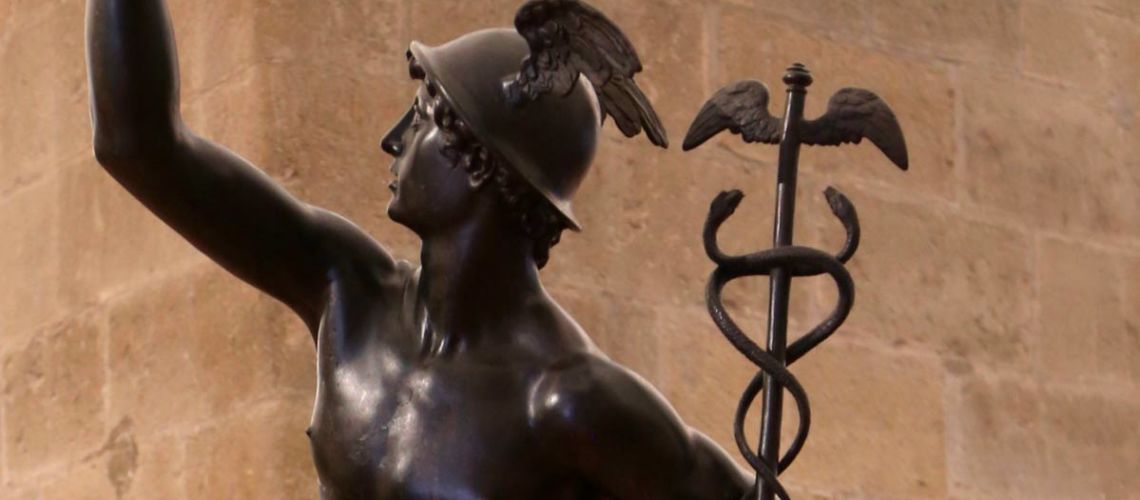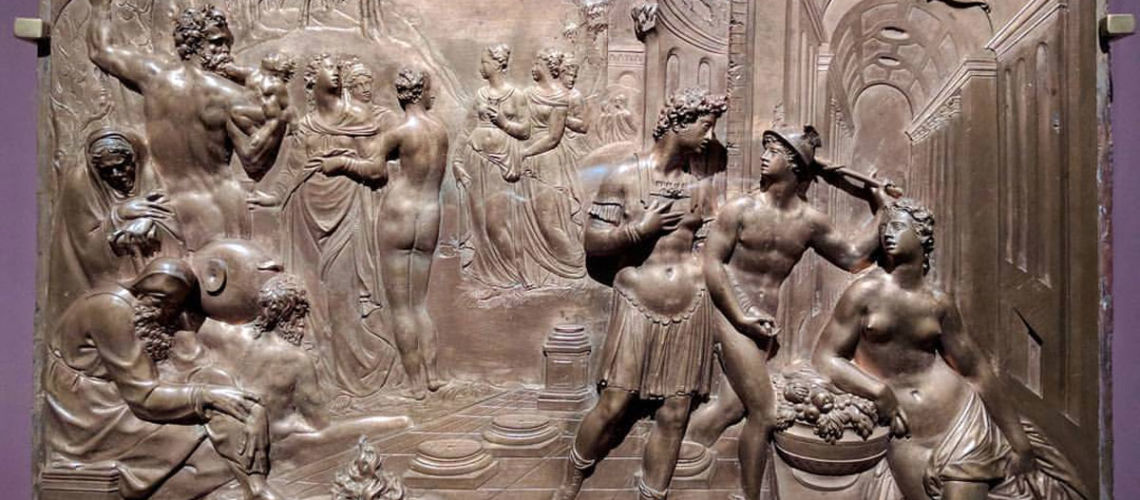The Giambologna Foundry in Florence
Giambologna in Florence
Giambologna, portrayed by the painter Hendrick Goltzius,
arrives in Florence in the early fifties of the 1500s, hosted for two or three years by Bernardo Vecchietti, who introduced him to Francesco I dei Medici, making him take his service.
The Medici, who was moving from the Signoria Palace to the Pitti Palace hosted him in The Signoria Palace. Time after Giambologna moved renting a house (Vietti house) in Borgo San Jacopo, and about a year later went to live in Borgo Pinti. In fact, here he bought for 2,000 scudi, plus 600 of expenses, the house with shop at the current number 26 of this street, which later became Bellini delle Stelle Palace.
The Medici's and the Foundry
In 1587 Francesco I succeeded his brother Ferdinando I, who even more esteemed Giambologna, so much so that he had at his expense the construction of a new foundry where was the old shop. The works began on 12 December 1587. In January 1588 the roof had already been installed, and subsequently the facade was rebuilt on the road, still present today.
The coat of arms of Giambologna is applied to the facade on top and the bust of Francesco I carved by Giambologna himself above the entrance door,
and the large room of the lost wax foundry was built next to it, with a large door.
The models that Giambologna had in the shop of Palazzo Vecchio, including the clay model of the monumental Rape of the Sabine, were immediately transferred. The artist was able to cast the great monuments on his own without using the other grand-ducal Florentine foundries.
The Medici's on horseback
The first cast that was performed was that of the Equestrian monument of Cosimo I today in Piazza Signoria ,
powred in the night between 27 and 28 September 1591, with the help of the Venetian Giuliano Alberghetti along with others. Cosimo I’s son, Don Giovanni dei Medici, also attended at the cast. It was a foundry that had no comparisons throughout Europe, and lasted until the mid-eighteenth century, when the workers scattered in other foundries. Among others there worked Pietro Francavailla, Susini, Francesco and Guasparri della Bella (brothers of Stefano della Bella).
The difficulty of the lost wax casting
The three years from the construction of the foundry to the casting of the equestrian monument of Cosimo I demonstrate the difficulties encountered in the enterprise, so much so that the intervention of the expert Venetian founder Giovanni Alberghetti was requested to prepare the suitable furnace. For Cosimo I and for Ferdinando I, after filling the wax with the clay it needed almost a year to allow this to dry well during the summer. For Ferdinand I then spent another three years between the cast of the horse and that of the knight, powred in November 1605.
The knights on horseback fashion returns
Then the knights on horseback came out the foundry for the squares of Florence, Madrid, Paris: the equestrian monument of Ferdinando II in piazza SS. Annunziata (by Giambologna, but finished, after his death in 1608, by Tacca); the equestrian monument of Philip IV of Spain 1616, in the Plaza de Oriente in Madrid, also this by Giambologna and finished by Tacca (gift of the Grand Duke dei Medici to the King of Spain);
the equestrian monument of Henry IV of France wanted by his wife Maria dei Medici after his death. This monument underwent various vicissitudes, was lost at sea during transport due to a shipwreck, was recovered and transported to the Pont Neuf in Paris; it was then destroyed during the French Revolution. But thanks to the discovery of the negative cast, in 1818 it was possible to make a second replica.
Giambologna retires
As the orders increased, the physical decay of Giambologna corresponded, so much so that he was forced, even if willingly, to surrender the reins of the foundry to Tacca not yet twenty-five years old, which became its owner at his death, despite of the problems with the heirs. The workshop of Borgo Pinti had in fact become a great artistic foundry where the Tacca had entered in 1592 becoming also a clever foundry man. Tacca began his training between March and June with the task of refining the base of the monument of Cosimo I, until becoming, in a few years, head of the foundry, and intended to complete the latest works of Giambologna. The monument was placed and inaugurated at the beginning of October 1608, for the arrival of Mary Magdalene of Austria, who on October 18 was to marry Cosimo II, son of Ferdinando III.
The good disciples
The experience and skill of the foundry team increased gradually: it was possible to obtain the casting of Ferdinando I more subtle than that of Cosimo I, so much so that it weighed less than Cosimo I’s horse. The thicknesses were always refined by more, the Henry IV of France was even thinner and lighter, that of Philip IV of Spain the lightest of all.
With this last, the casting technique in several parts was inaugurated, proving to have acquired and perfected the assembly and welding technique of the castings, which he then continued to use as, for example, in the two marine animal fountains in Santissima Annunziata square in Florence.
The "indirect" casting and the replicas
The technique of lost wax casting, called indirect, allowed the reproducibility of a model in several bronze replicas. The Medici had very quickly understood, as early as 1564, that works of art were ideal diplomatic gifts. So Grand Duke Cosimo I and his son Francesco I gave to the Emperor Maximilian II, future brother-in-law of the youngest Medici, three bronzes of Giambologna: the life-size Mercury (now in private collection),
a replica of Venus identical to that signed by the artist and finally a bas-relief with the allegory of Francis I
(both at the Kunsthistorisches Museum in Vienna); there is a replica of the latter at the Bargello National Museum in Florence.
Giambologna himself had organized in his artistic foundry the production of several replicas of his original models, which when in 1580 the pupil-assistant Antonio Susini entered the master’s workshop, took place the repeated reproduction of his models; and when Susini in 1600 opened his own workshop in Via della Pergola in Florence, the casting of bronzes continued on the master’s models, which was still in effect until the late ‘600.
But it was the Tacca who had begun to create reduced models of classical art and Michelangelo’s masterpieces reductions for this last lost.
The Tacca was also the maker of the “Porcellino“, the wild boar, placed outside the Mercato Nuovo in Florence.
There is a common thread that unites the Renaissance foundry of Giambologna and his pupils with the Fonderia Ferdinando Marinelli of today: from master to disciple, from headmaster in apprentice, the knowledge and techniques of the ancient art of lost wax casting have arrived, without interruption, at the Marinelli Foundry.

